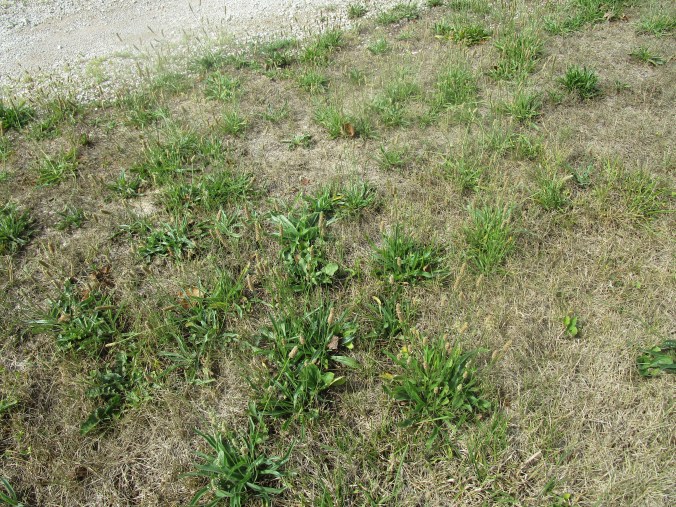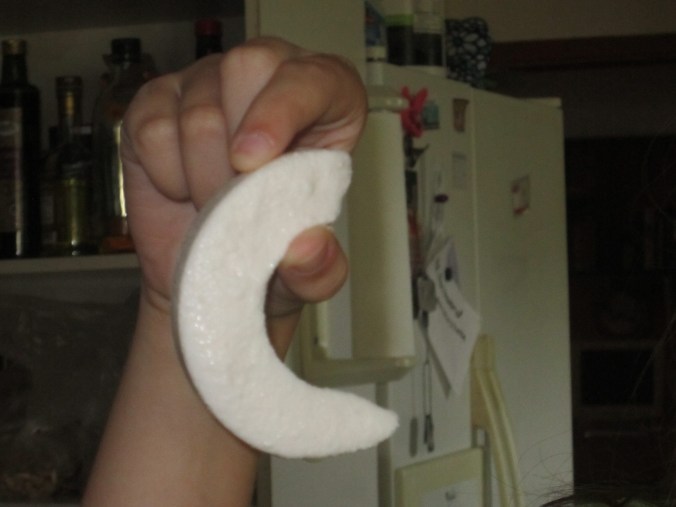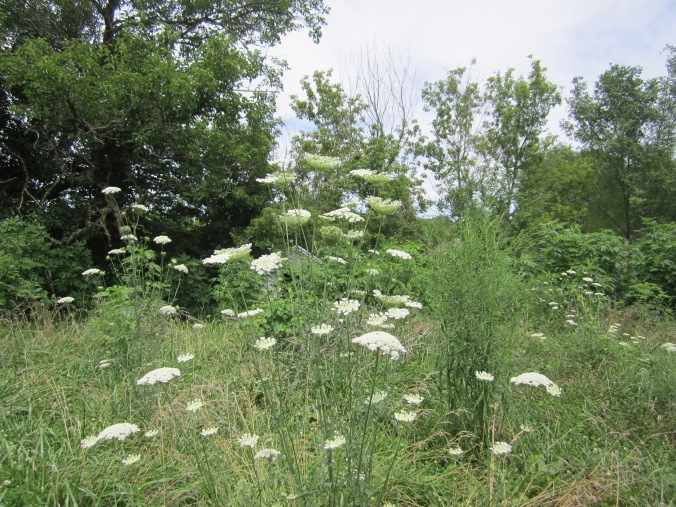Officially, we are still at D4-Exceptional drought levels, but we did get some significant rain this last week. Depending on who you ask, we got somewhere between four and seven inches. Thank you Lord for that!
In my last post, I said that I had seen some different “weeds” this summer probably due to the drought. Maybe when the less drought tolerant plants don’t make it, room is left for these guys. Anyway, it’s always exciting to see new stuff.
Speaking of new stuff. Someone in the wild edible Facebook page I belong to, told me about this phone app called Picture This. When you come across a plant you don’t recognize, you can take take a picture of it, and the app will try to identify it. Most of the time, it gives you a few possibilities, with the first one most likely. If nothing else, that means you have a place to start from. I’ve been having a great time playing with it!
This cannot be said often enough: If you do not know, with 100% certainty, what a plant is, don’t eat it! It could be fine, or it could kill you. By the way, all the pictures in this post were taken with either my camera or my phone. With one exception, they were all taken somewhere on our place.
This is spurge. You DON’T want to eat it. It will give you a bad stomach ache and all the nasty stuff that goes along with that.

spurge
This however, is purslane, and it is good for you.

purslane
Here is a very good blog post with some good pictures that can give you more detailed info about the two. For me, purslane leaves look shiny and rubbery like succulents. They often grow close together, so once you know the difference, it’s pretty easy to tell them apart. An interesting side note is that, often edible plants and their poisonous look alikes grow close together. Another look alike for spurge (and as far I know this isn’t edible either) is knot weed. This grows all over my yard. I think makes great ground cover. I would like it better if it was edible.

knot weed
When we got rid of the giant ragweed last spring, this came up in its place. It’s called “Lambs Quarters, or Pig Weed or Wild Spinach…anyway. You can eat it. It’s a cousin to amaranth. As a matter of fact, several years ago, when we lived in Independence, I planted some amaranth. When it came up, my ex-husband saw it and asked me why I planted pig weed.
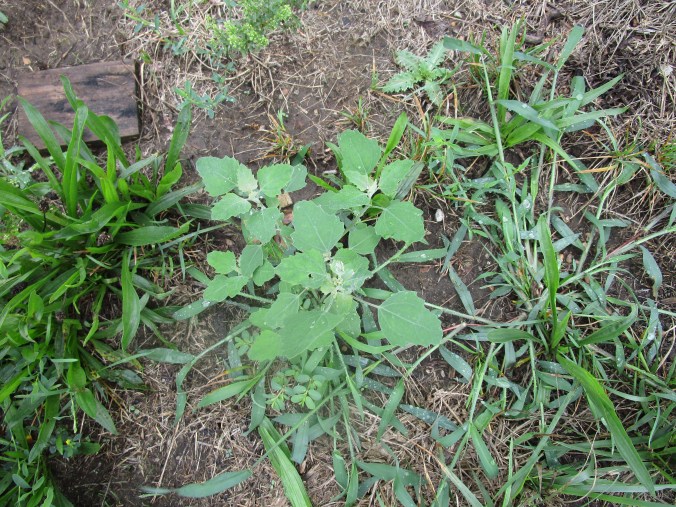
pig weed
Taking a walk with Ed the other day, we came across these. Yep. Elderberries. They are along the road, and I don’t know if they were sprayed (although they probably weren’t), so we didn’t pick any. You gotta be careful with roadside finds for that reason. Many places want to get rid of the “weeds” along the road, so they spray poison. You don’t want to eat that! We’ve lost some of our own elderberry bushes this summer, while others seem to be doing very well. It well be a few years before ours produce anything though.

elderberries
This is sumac. No this isn’t the poison sumac. The berries and seeds are edible. Green Deane at Eat the Weeds has a great article about sumac. Going to have to play with this one if I can get to it. Taking the picture was kind of a challenge.

Sumac bush. You can see a cluster of fruit/seeds in the center of the picture and another one off to the right.
This is milk weed. Butterflies love it, but the leaves are poisonous for us. The Spruce has some good information about milk weed, including the fact that caterpillars can eat the poisonous leaves and thrive, while becoming poisonous themselves to any potential predator.

milk weed and guest
This is pepper grass. It’s growing out in front of our detached garage. I had to hold my camera down at ground level in order to get a decent picture. The leaves have a peppery taste, and the seeds can be ground and used like black pepper. Green Deane says the roots mixed with vinegar makes a great horseradish substitute. Ed and Bam Bam would love that. Chicken girl and I, not so much. You all know I’m going to have to play with it anyway, right?

pepper grass growing in the gravel
This stuff is growing everywhere around the house. It’s called Hornbeam Copperleaf, and as of yet, I can find no good use for it. If you do, let me know.

hornbeam copperleaf
These were out in the dog pen. Don’t know enough about fungi to even venture a guess. I did ask about it, and couldn’t get a definitive answer, so we pulled them up and disposed of them. Don’t think the dogs would eat them, but you never know with Meeko. He eats ragweed leaves.

Some kind of fungi. Notice the spurge at the bottom of the picture
This is…yes, it’s corn. We didn’t plant it. It’s out where the chicken pen was a few years ago, so we figure those were some seeds the chickens didn’t get. Don’t really expect it to do anything, but we’ll see. Morning glories are coming up around it. Talk about invasive! Morning glories are the worst! Even if they are pretty.
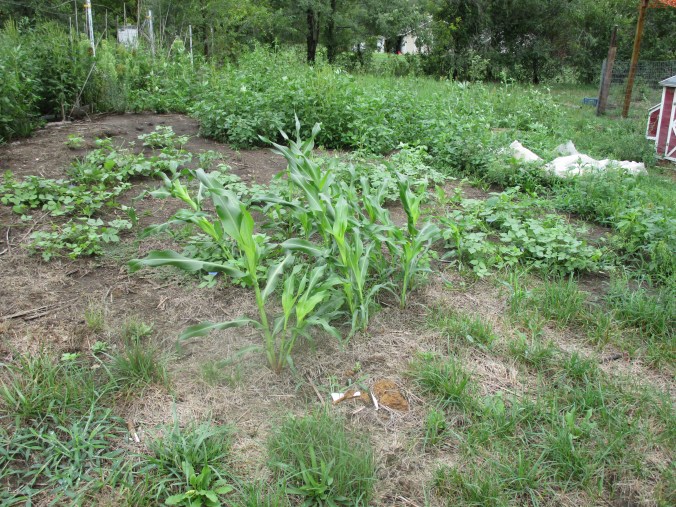
Corn. See the morning glories kind of circled behind it?
This is called a hummingbird vine. Someone had to have planted it, because it originates in Mexico and South America. It’s invasive too. It’s pretty, but it’s unruly. Good thing I like the wild look huh. Still if it gets too wild, I’ll have to cut it back.

hummingbird vine
The wild cherries are gone as far as I can tell, but the grapes are hanging in. 
We have a ton of juniper berries, but still don’t know what to do with them besides making gin and I’m not doing that.

juniper berries
Of course we still have plantain, dandelion, chicory, mallow, and goldenrod.

goldenrod
Remember when we were talking about mint and I said that it’s super invasive and that’s why a lot of people don’t plant it directly in the ground? Well, I guess it doesn’t do well in drought, because I only have about three stalks of mint in my yard and they didn’t get very big. Maybe it will come back now that we have some water.

What’s left of my mint.
For the second year in a row, we have a volunteer pumpkin growing under the maple tree in the front yard. It starts so late that it won’t be big enough before it gets cold. At least it wasn’t last year.

volunteer pumpkin blooming
Next week, Ed we’ll be back to tell you more about our experience with the wild hive. It was awesome!
Hey, if you like our blog, please share the love with your friends!
Have a great week!
Connie




